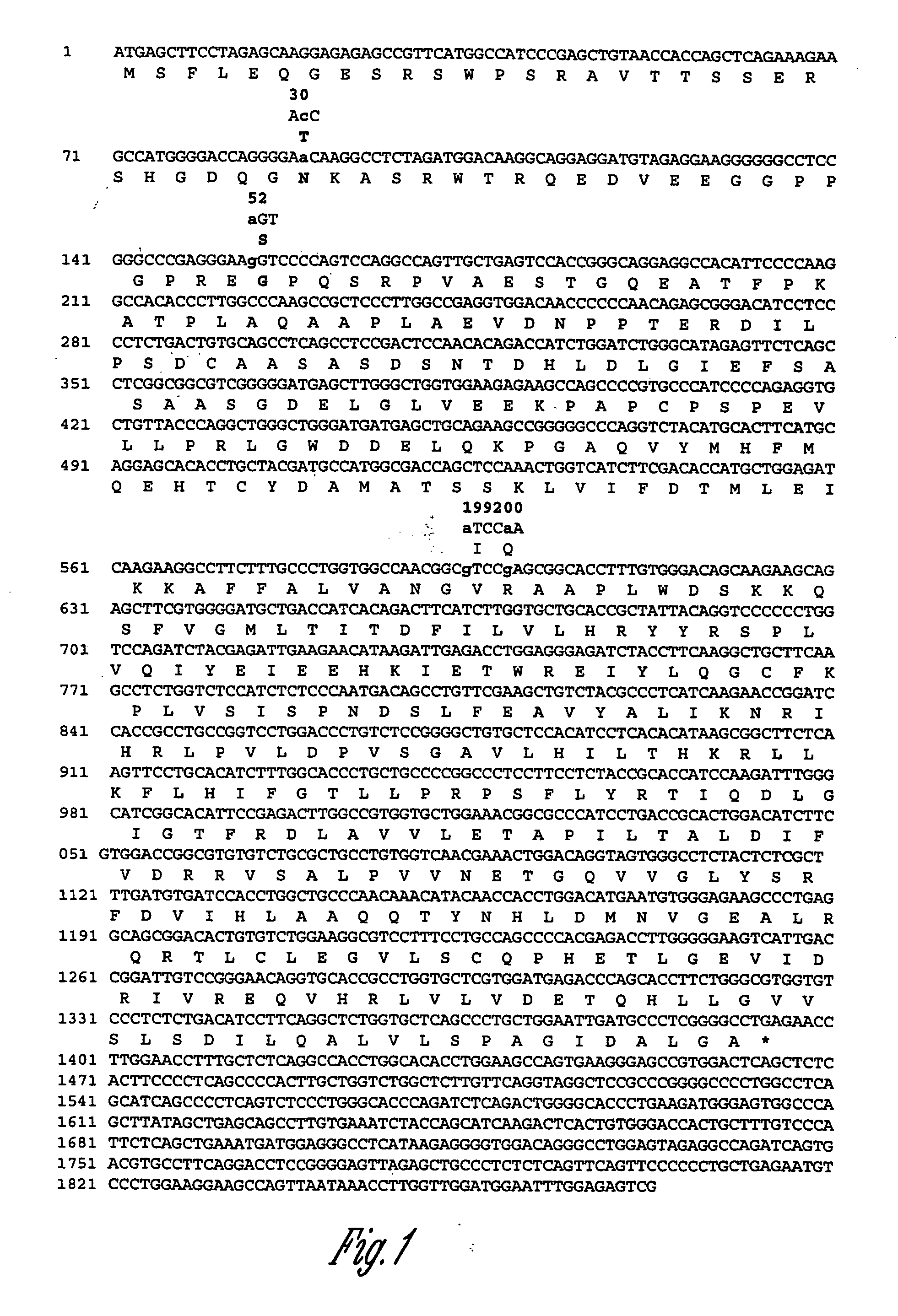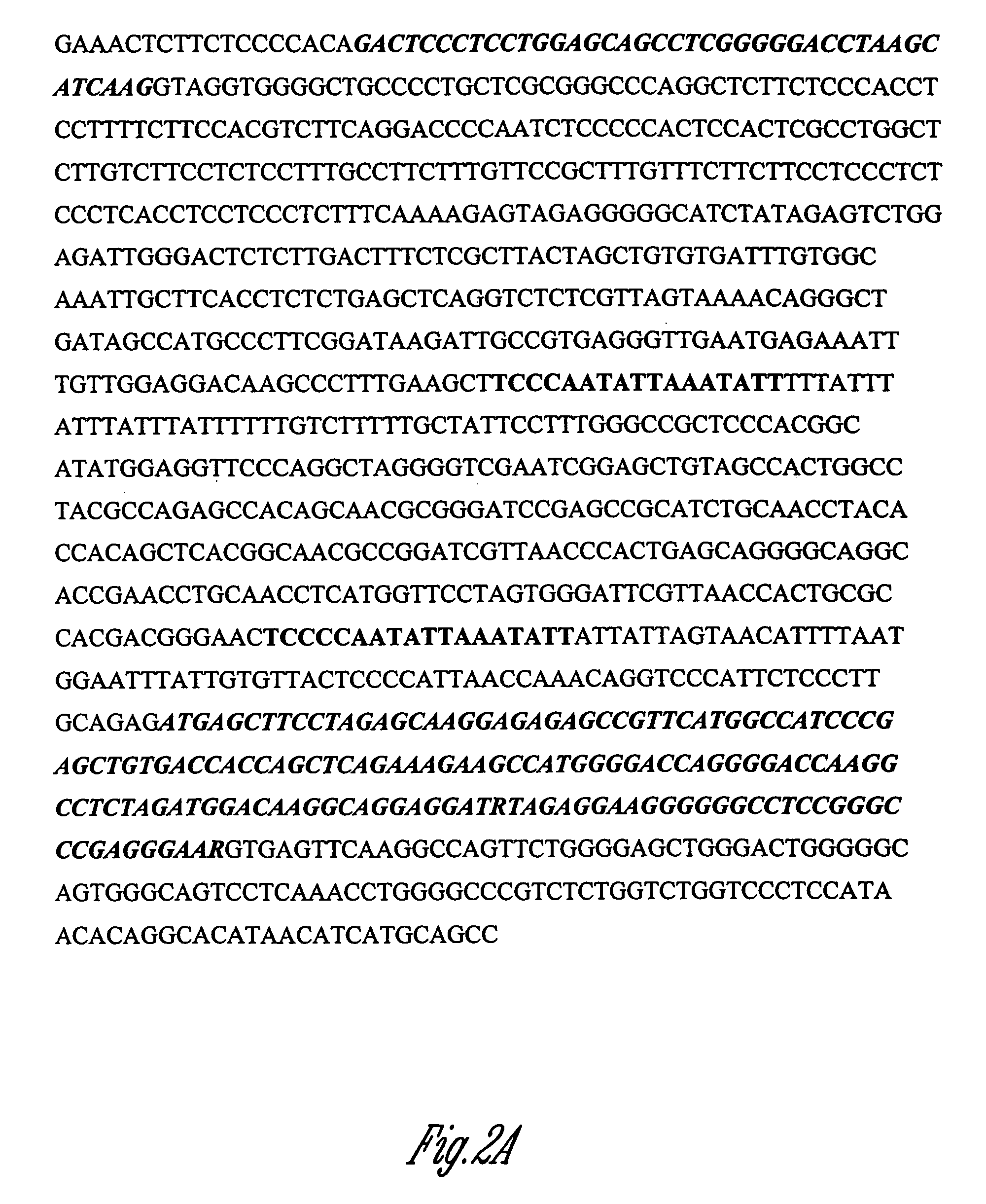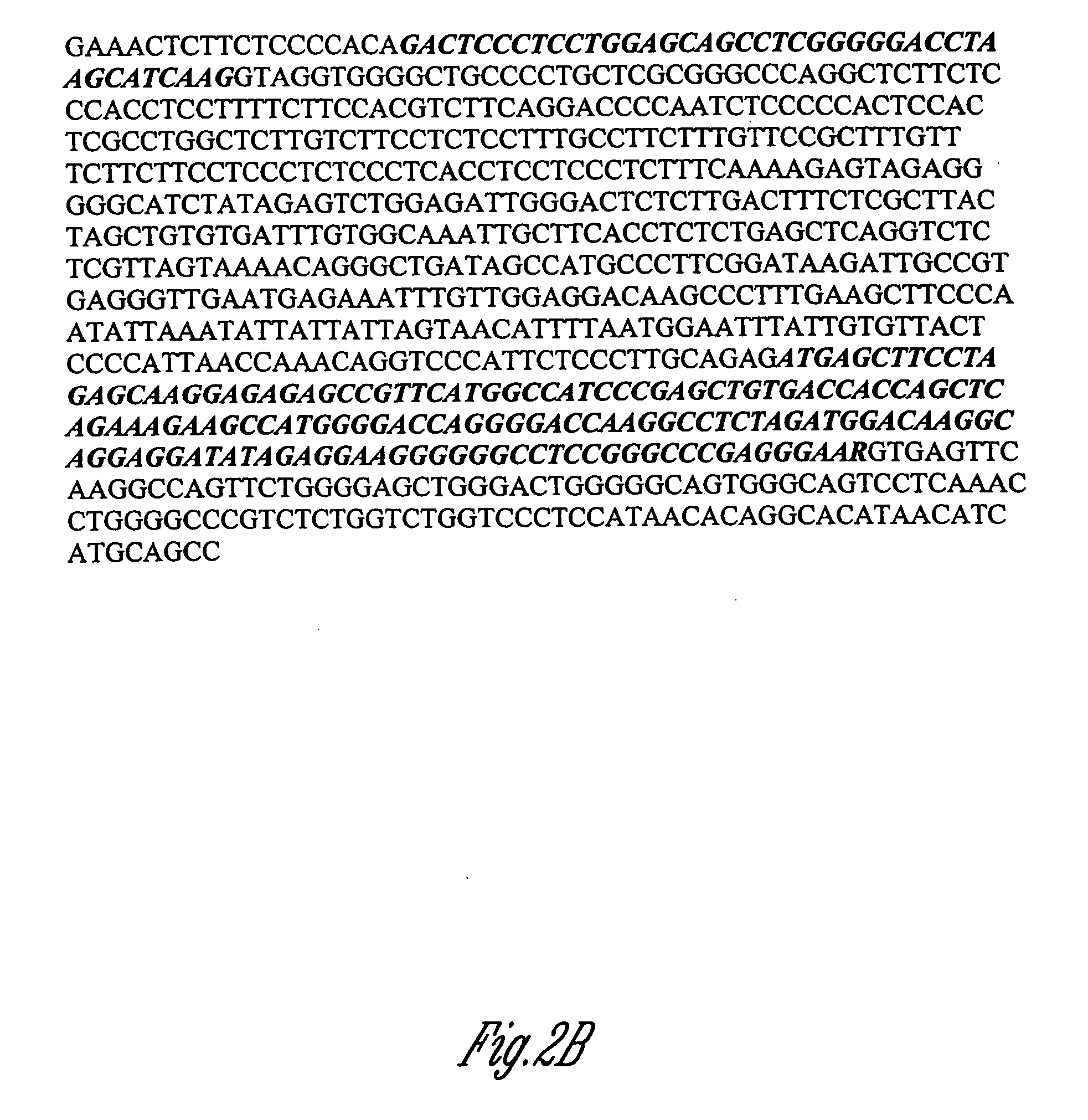Novel PRKAG3 alleles and use of the same as genetic markers for reproductive and meat quality traits
a technology of genetic markers and alleles, applied in the field of detection of genetic differences among animals, can solve the problems of inability to obtain data on potential breeding animals, low heritability of desired traits, and difficulty in assessing meat quality, etc., and achieve the effect of increasing the accuracy of selection
- Summary
- Abstract
- Description
- Claims
- Application Information
AI Technical Summary
Benefits of technology
Problems solved by technology
Method used
Image
Examples
example 1
Abstract
[0112] Several quantitative trait loci (QTL) affecting muscle glycogen content and related traits were mapped to pig chromosome 15 using a three-generation intercross between Berkshire x Yorkshire pigs. Based on the QTL location the PRKAG3 (protein kinase, AMP activated, 73 subunit) gene was considered to be a good candidate for the observed effects. Differences in the PRKAG3 gene sequences of the founder animals of the intercross were analyzed. The RN− mutation previously reported was not present in the cross but three missense substitutions and a polymorplic Short Interspersed Element (SINE) were identified. To confirm the hypothesis that at least one of these mutations was associated with differences in meat quality over 1,800 animals from several unrelated commercial lines were genotyped for the candidate substitutions and an association study was performed. The results demonstrate the presence of new economically important alleles of the PRKAG3 gene affecting the glyc...
example 2
[0192] According to the invention, and quite surprisingly, the PRKAG3 alleles were also shown to have a significant association with litter size in animals. The invention in this particular embodiment relates to genetic markers for litter size in animals. It provides a method of screening animals to determine those more likely to produce a larger litter when bred by identifying the presence or absence of a polymorphism in the PRKAG3 gene that is correlated with increased litter size. As used herein, the term “increased litter size” means a biologically significant increase in litter size above the mean of a given population.
[0193] An association between PRKAG3 genotype and litter size.
[0194] The polymorphism at codon 199 of PRKAG3 was used to genotype sows with litter size data. Two lines were utilized, corresponding to a Landrace line (A) and a Duroc Synthetic line (B) that were previously found to have an association between this polymorphism and meat quality traits.
[0195] Data...
PUM
| Property | Measurement | Unit |
|---|---|---|
| pH | aaaaa | aaaaa |
| pH | aaaaa | aaaaa |
| temperatures | aaaaa | aaaaa |
Abstract
Description
Claims
Application Information
 Login to View More
Login to View More - R&D
- Intellectual Property
- Life Sciences
- Materials
- Tech Scout
- Unparalleled Data Quality
- Higher Quality Content
- 60% Fewer Hallucinations
Browse by: Latest US Patents, China's latest patents, Technical Efficacy Thesaurus, Application Domain, Technology Topic, Popular Technical Reports.
© 2025 PatSnap. All rights reserved.Legal|Privacy policy|Modern Slavery Act Transparency Statement|Sitemap|About US| Contact US: help@patsnap.com



